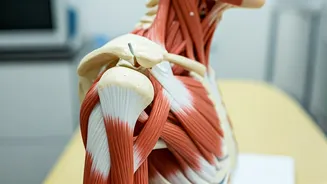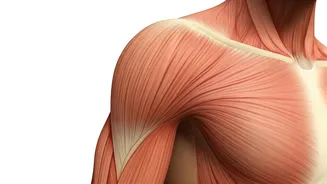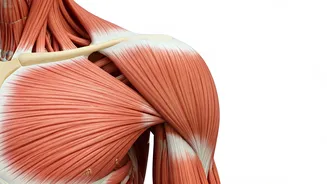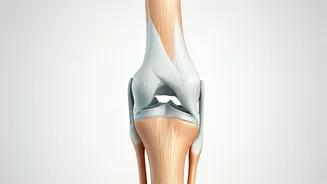Shoulder Pain Basics
Shoulder pain is a common issue that can stem from various causes, including injuries, overuse, or conditions like arthritis. Understanding the root cause of
your shoulder pain is essential for selecting the appropriate exercises to alleviate it. The shoulder's complex structure, which includes the rotator cuff muscles, tendons, ligaments, and bones, makes it vulnerable to a wide array of problems. Over time, improper posture, repetitive motions, or sudden impacts can strain these structures, leading to pain, stiffness, and reduced mobility. Before commencing any exercise routine, consulting a healthcare professional is crucial. They can diagnose the source of the pain and provide personalized advice. Proper assessment ensures you're addressing the specific issue and preventing further injury. Some individuals might experience pain radiating from the neck or upper back, making it essential to identify the precise origin of the discomfort. Knowing the triggers, such as certain activities or movements, can also help in modifying routines to prevent future pain. Taking care of your shoulders can significantly improve your quality of life.
Arm Circles Explained
Arm circles are a fundamental exercise that is simple yet highly effective in warming up the shoulder muscles and improving circulation. This exercise involves making small, controlled circular motions with your arms, either forward or backward. To perform arm circles correctly, stand with your feet shoulder-width apart and your arms extended to the sides at shoulder height. Begin with small circles, gradually increasing the size as your shoulders loosen up. Perform the circles forward for a set duration, such as 30 seconds, and then switch to backward circles. It's crucial to maintain a relaxed posture and avoid shrugging your shoulders during the exercise. Breathe deeply and consistently throughout the exercise to maximize its benefits. Arm circles help to increase blood flow to the shoulder region, helping to decrease stiffness and enhance mobility. Regular practice can alleviate tension and prepare the shoulders for more strenuous activities. By incorporating arm circles into your daily routine, you create the foundation for improved shoulder function and pain relief. This simple exercise is suitable for people of all ages and fitness levels. Consistency is key, and it is beneficial to include this exercise several times a day for maximum results.
Shoulder Flex Exercise
The shoulder flex exercise focuses on increasing the range of motion and flexibility in your shoulders. It primarily involves raising your arms in front of you. To perform this exercise, begin by standing or sitting with your back straight and your core engaged. Raise your arms straight forward until they are parallel to the ground or as far as comfortable, with your palms facing down. If you're new to exercise, you might find it helpful to start with your arms lower and gradually increase the height as your flexibility improves. Maintain a steady pace and concentrate on stretching the muscles in your shoulders and upper back. Avoid any jerky movements, ensuring each movement is smooth and controlled. This exercise can be enhanced by lightly squeezing your shoulder blades together as your arms reach their peak extension. This action adds to the stretch, allowing your shoulder muscles to relax and move more effectively. Regular practice of the shoulder flex exercise helps improve overall mobility and reduces the risk of stiffness, which can aid in activities like reaching or lifting. The benefits extend beyond flexibility, supporting your shoulder's natural movements, promoting better posture, and preventing strain.
Wall Slides Technique
Wall slides are a valuable exercise for improving shoulder blade stability and mobility. This exercise involves using a wall to guide your movements and facilitate better control and form. Stand with your back flat against a wall, ensuring your feet are a comfortable distance away. Bend your elbows to 90 degrees, with your upper arms at your sides, and your forearms against the wall. Slowly slide your arms up the wall as far as you can comfortably go, while keeping your elbows and forearms in contact with the wall. Pay attention to not letting your lower back arch. As you slide your arms up, squeeze your shoulder blades together. Once you've reached your maximum comfortable height, slowly return to the starting position. During the entire exercise, focus on maintaining contact between your arms and the wall. This ensures correct form and maximizes the exercise's effectiveness. Wall slides are exceptionally useful for those with rounded shoulders or those who spend long periods sitting at a desk. By regularly performing this exercise, you enhance your shoulder blade posture, which improves shoulder mechanics and reduces pain. This simple but efficient exercise promotes flexibility and balance in the shoulder, reducing the chances of injury.
Towel Stretch Benefits
The towel stretch is an excellent exercise for increasing flexibility and range of motion in the shoulder joint. This exercise offers a way to stretch out the shoulder muscles and can relieve stiffness and improve overall shoulder functionality. To perform the towel stretch, take a towel and hold one end with each hand. Hold the towel behind your back, with one hand reaching up over your shoulder and the other reaching up from your lower back. Gently pull up on the top arm with the bottom arm, thus stretching the shoulder muscles in a controlled, safe manner. Hold the stretch for about 20-30 seconds, maintaining a steady breath. This stretch enhances flexibility and range of motion, which is crucial for overall shoulder health and performance. The towel acts as an external tool, helping to amplify the stretch and improve overall form. The use of a towel supports the entire range of motion, making it suitable for both beginners and experienced individuals. It is beneficial to incorporate the towel stretch into your daily or weekly routines. Over time, consistent practice not only improves flexibility but also prevents stiffness, which reduces the potential for injuries and promotes better overall posture.













